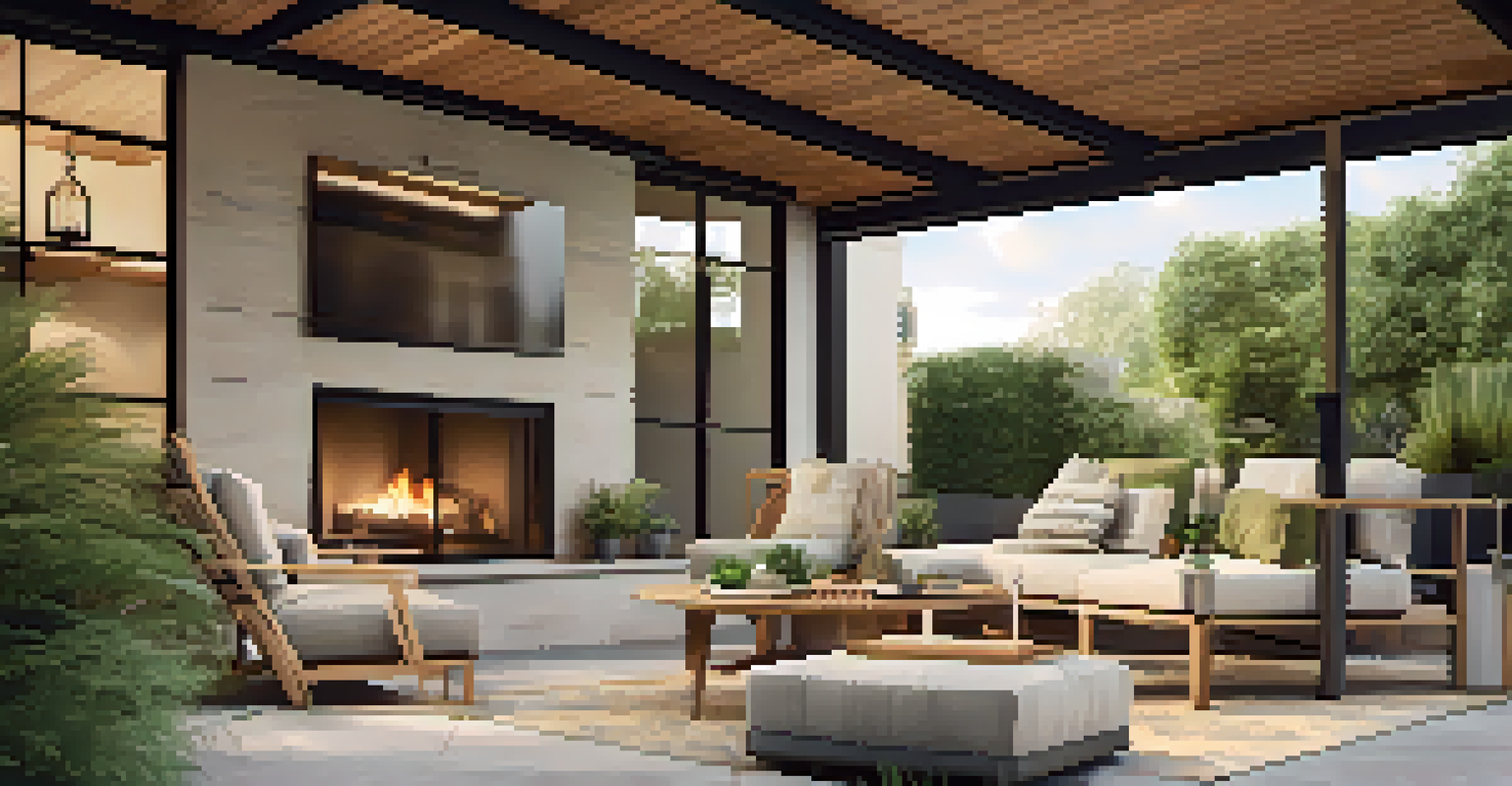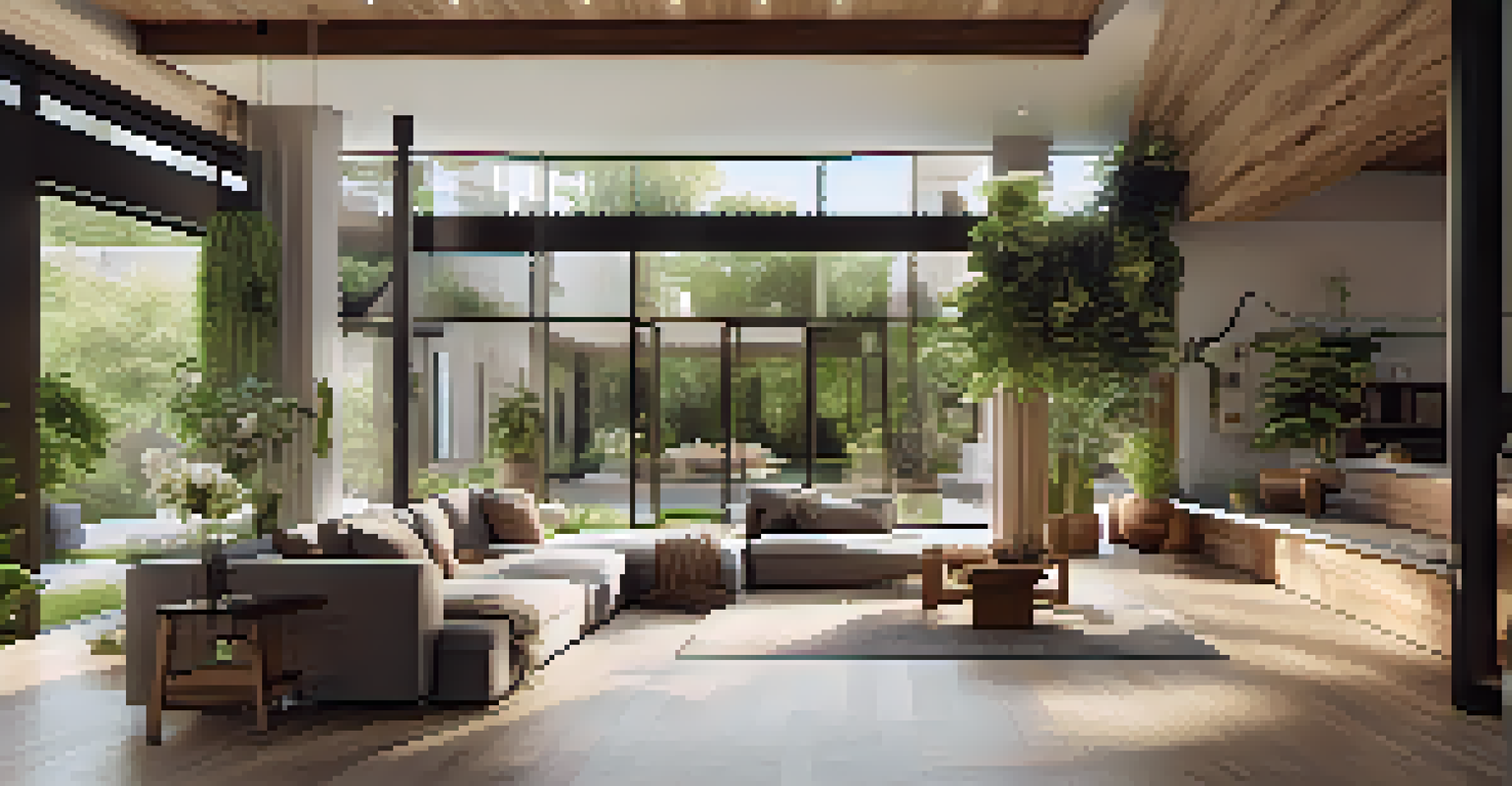Open Concept Living: Bridging Indoor and Outdoor

The Allure of Open Concept Living Spaces
Open concept living has become a popular design choice, and it’s easy to see why. By merging spaces like the kitchen, dining, and living areas, homeowners create a sense of cohesion and flow. This layout not only feels spacious but also fosters interaction among family and friends, making gatherings more enjoyable.
Design is not just what it looks like and feels like. Design is how it works.
Imagine hosting a dinner party where you can cook, serve, and socialize without being isolated in a separate room. This design encourages engagement, allowing you to connect with your guests while preparing meals. The open space invites natural light, which can make even the smallest areas feel brighter and more inviting.
Moreover, open concept living can enhance your home’s resale value. Many prospective buyers appreciate the modern feel and versatility of these spaces, often preferring them over traditional layouts. Embracing this trend could not only improve your day-to-day living experience but also be a smart investment for the future.
Bringing Nature Indoors: The Benefits of Biophilic Design
Biophilic design is all about connecting indoor environments with nature, and it perfectly complements open concept living. This approach incorporates natural elements, such as plants, water features, and natural light, which can improve mood and well-being. By merging indoor and outdoor spaces, you create a serene atmosphere that promotes relaxation.

Consider large windows or sliding glass doors that open up to your backyard or garden. This setup not only provides breathtaking views but also allows fresh air to circulate throughout your home. Adding indoor plants can further enhance this connection, making your living space feel more vibrant and alive.
Open Concept Enhances Interaction
Merging living spaces fosters connection, making gatherings more enjoyable and interactive.
Incorporating natural materials, such as wood and stone, can also strengthen this bond with nature. These elements create a warm and inviting ambiance while reminding us of the beauty found outdoors. In essence, biophilic design turns your home into a personal oasis.
Outdoor Living: Expanding Your Living Space
One of the best aspects of open concept living is its seamless transition to outdoor spaces. Patios, decks, and balconies can serve as extensions of your home, providing additional areas for relaxation and entertainment. Imagine enjoying a morning coffee outside or hosting summer barbecues with family and friends in your garden.
The best rooms have something to say about the people who live in them.
To make the most of your outdoor living space, consider adding comfortable furniture, outdoor kitchens, or fire pits. These features can transform your backyard into an inviting retreat, perfect for both quiet evenings and lively gatherings. Plus, they encourage you to spend more time outside, soaking in the fresh air and sunshine.
Incorporating outdoor elements into your design can also enhance your home's aesthetics. Think about using colors and materials that echo your indoor decor, creating a cohesive look. This harmony can make your home feel even larger and more connected.
Creating Flow: Design Tips for Open Spaces
Designing an open concept living space may seem daunting, but a few thoughtful choices can create a beautiful flow. Start by choosing a cohesive color palette that ties the different areas together. Soft, neutral tones can help create a calming atmosphere, while pops of color can add personality and vibrancy.
Furniture arrangement plays a crucial role in maintaining openness. Opt for versatile pieces, like a sectional sofa or multifunctional tables, that encourage movement and conversation. Avoid overcrowding your space with too many items; instead, select a few key pieces that make a statement.
Biophilic Design Boosts Well-Being
Incorporating natural elements creates a serene atmosphere that promotes relaxation and improves mood.
Lastly, consider using rugs to define different areas within your open layout. These can visually separate spaces while still allowing them to feel interconnected. Thoughtful placement and design can truly elevate your living experience.
Maximizing Natural Light in Your Home
Natural light is one of the key benefits of open concept living, making your home feel more spacious and inviting. Large windows, skylights, and glass doors can flood your interiors with sunlight, reducing the need for artificial lighting. This not only creates a warm atmosphere but can also positively impact your overall mood.
To enhance the flow of light, consider using sheer window treatments that allow sunlight to filter through while maintaining privacy. Mirrors can also be strategically placed to reflect light and create an illusion of more space. Positioning them across from windows can amplify brightness throughout your home.
Don’t forget about the layout of your furniture, which can also affect how light travels through your space. Avoid blocking windows with large pieces; instead, arrange your furniture to maximize visibility and light flow. Embracing natural light can transform your open concept space into a bright and cheerful haven.
Sustainability in Open Concept Living
Embracing open concept living can also align with sustainable practices. The layout allows for more efficient use of space and resources, reducing the overall energy consumption of your home. By minimizing walls and using natural light, you can lower your reliance on artificial lighting and heating.
Incorporating eco-friendly materials into your design can further enhance sustainability. Look for reclaimed wood, bamboo, or recycled materials that are both stylish and environmentally friendly. Choosing energy-efficient appliances can also help reduce your carbon footprint while still enjoying modern conveniences.
Sustainability in Home Design
Open layouts allow for efficient resource use, reducing energy consumption and promoting eco-friendly choices.
Lastly, consider integrating green technologies, such as solar panels or rainwater harvesting systems. These features not only benefit the environment but can also lower your utility bills. By making sustainable choices, you can create a beautiful open concept space that’s kind to the planet.
Personalizing Your Open Concept Space
One of the joys of open concept living is the opportunity to showcase your personal style. With fewer walls to restrict your creativity, you can express yourself through decor, color choices, and furniture selections. This flexibility allows you to curate a space that reflects your personality and lifestyle.
Consider using artwork, statement furniture, or unique lighting fixtures to add character to your home. Mixing different textures and materials can also create visual interest and depth. Don't be afraid to experiment with bold colors or patterns that resonate with you.

Remember that your open concept space should evolve with you. As your tastes change, you can easily update your decor or rearrange your layout to keep things fresh. Personalizing your home not only enhances its beauty but also creates a space that feels truly yours.